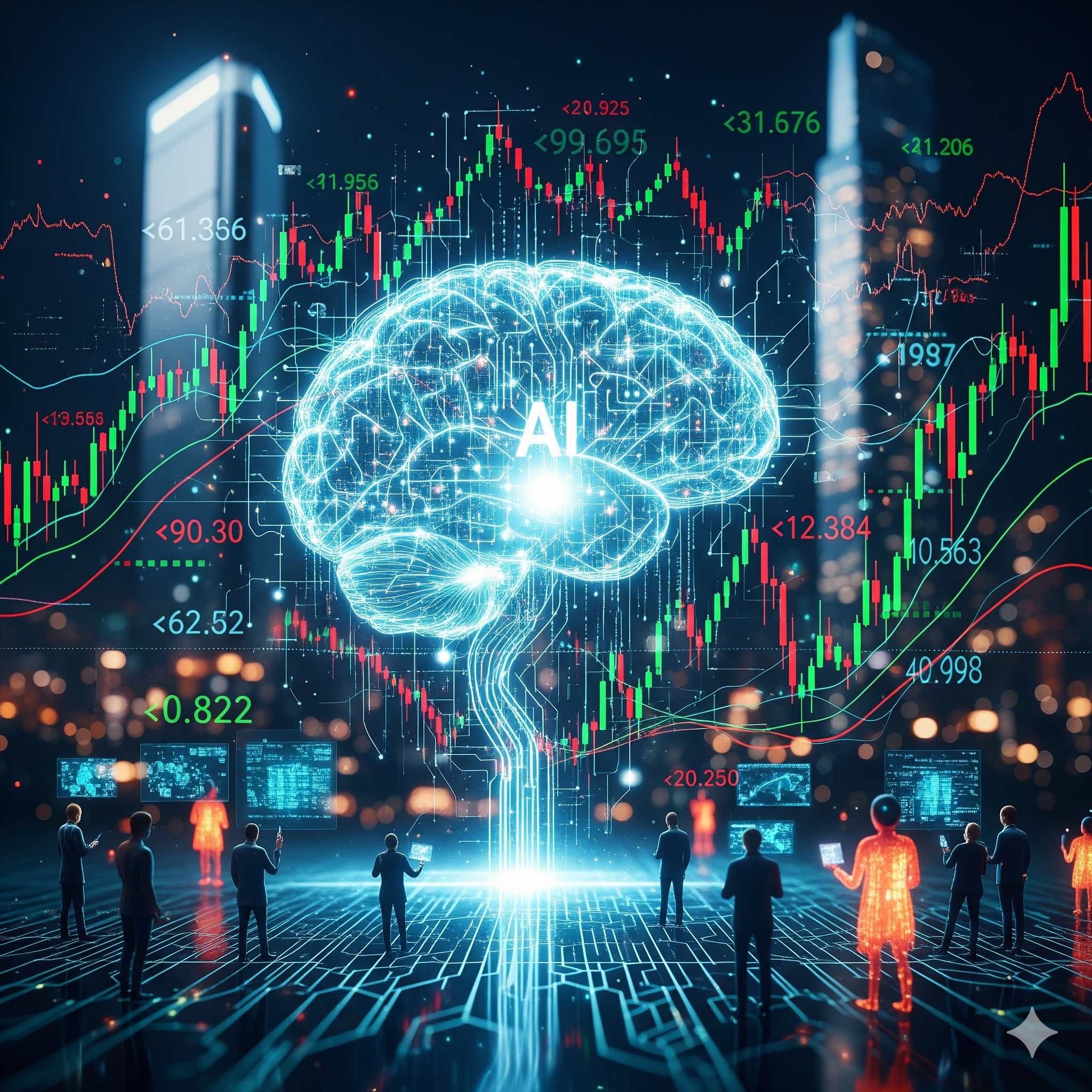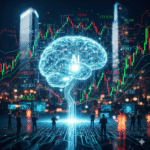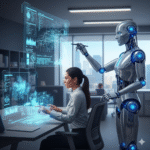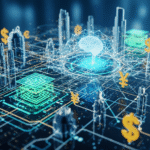The world of finance is changing, and at the forefront of this transformation is artificial intelligence (AI). For decades, stock market analysis was a job for seasoned experts who relied on a mix of experience, gut feelings, and complex mathematical models. Today, however, AI is stepping up, offering a new, powerful way to predict market movements. It’s not about replacing human insight but augmenting it with the ability to process and analyze data at a speed and scale that’s simply impossible for a person to match. From a simple day trader to a major institutional investor, the use of AI in stock market predictions is becoming a key competitive advantage.
Background and Context: How AI Works Its Magic
So, how does AI actually predict what the market will do? It’s all about data and algorithms. Traditional stock analysis, often called fundamental or technical analysis, looks at specific metrics like a company’s earnings, a stock’s price history, or trading volume. AI takes this to an entirely new level. It can ingest and process an enormous variety of data types, including:
- Quantitative Data: This is your traditional stuff—historical stock prices, trading volumes, and financial statements. AI can analyze years of this data to identify hidden patterns and correlations.
- Qualitative Data: This is where AI truly shines. Algorithms, particularly those using Natural Language Processing (NLP), can read and understand unstructured data. They can scan thousands of news articles, social media posts, and company earnings reports in real-time to gauge market sentiment. Is the general mood around a company positive or negative? This sentiment analysis can be a powerful predictor of short-term price movements.
AI doesn’t just look at one or two variables; it uses sophisticated algorithms to build complex models. Some of the most common types of AI used for this are:
- Machine Learning (ML): These algorithms learn from past data to make predictions. They can identify patterns in historical stock prices and use that knowledge to forecast future movements.
- Deep Learning (DL): A more advanced form of ML, deep learning uses multi-layered neural networks to mimic the human brain. They’re particularly good at recognizing intricate, non-linear relationships in data that might be missed by other models. An example is the Long Short-Term Memory (LSTM) network, which is great for analyzing time-series data like stock prices because it can remember past information for a long time.
- Reinforcement Learning: This is a type of AI that learns through trial and error. It can be used to develop trading strategies by rewarding the model for profitable trades and penalizing it for losses, helping it continuously improve its performance.
| Traditional Analysis | AI-Powered Analysis |
| Human-led, time-consuming: Relies on manual research and human judgment. | Automated, high-speed: Algorithms can process massive datasets and execute trades in milliseconds. |
| Limited data scope: Focuses on a few key financial metrics and news headlines. | Massive data scope: Integrates quantitative data with qualitative data from social media, news, and more. |
| Prone to emotional bias: Decisions can be swayed by fear, greed, or personal beliefs. | Emotion-free: Decisions are based purely on data and a predefined set of rules. |
| Slower execution: Trades are executed manually, often missing fleeting opportunities. | High-frequency trading: AI can execute thousands of trades per second to capitalize on micro-fluctuations. |
Export to Sheets
Key Benefits and Features
The application of AI in the stock market isn’t just a novelty; it offers tangible benefits that are revolutionizing how investors operate.
- Enhanced Accuracy and Speed: AI can process and analyze vast amounts of data—both structured and unstructured—at lightning speed. This allows it to identify subtle patterns and correlations that are invisible to a human eye. For high-frequency traders, this speed can make the difference between a profit and a loss. The ability to make data-driven decisions in real time leads to more accurate and timely trades.
- Elimination of Human Bias: One of the biggest challenges in trading is overcoming emotional biases like fear and greed. An investor might hold a losing stock too long out of hope or sell a winning one too early out of fear. AI systems, however, are completely impartial. They execute trades based on pre-defined criteria, removing the psychological element that often leads to poor decisions.
- 24/7 Market Monitoring: The global stock market never truly sleeps. With markets in different time zones, a human trader can’t possibly monitor everything around the clock. An AI system, on the other hand, can continuously analyze markets, identifying opportunities and risks at any hour of the day or night.
- Advanced Risk Management: AI models can be trained to identify potential risks and anomalies with remarkable precision. By analyzing historical data and current market conditions, they can predict potential losses before they happen, allowing for proactive risk mitigation strategies. This is a crucial feature for both individual investors and large financial institutions.
Pros and Cons of AI in Trading
While the benefits are compelling, it’s important to have a balanced view. AI isn’t a silver bullet.
Pros:
- Unmatched Data Processing: The sheer volume and variety of data an AI can handle is its primary advantage.
- Speed and Efficiency: For strategies that rely on split-second decisions, AI is unbeatable.
- Objective Decision Making: It completely removes human emotions from the trading process.
- Pattern Recognition: It can discover complex, non-obvious patterns that would take a human years to find.
Cons:
- “Black Box” Problem: Many complex AI models, especially deep learning networks, can be difficult for humans to interpret. It’s not always clear why the model made a certain prediction, which can make some investors hesitant to trust it.
- High Development and Maintenance Costs: Creating a sophisticated AI trading system requires significant investment in technology, data, and skilled personnel. This makes it more accessible to large financial firms than to individual investors, although more consumer-friendly tools are emerging.
- Dependence on Historical Data: AI models rely heavily on past data. They may struggle to adapt to unprecedented, unpredictable events (like a global pandemic or a major political crisis) that have no historical precedent.
- Security Risks: Like any digital system, an AI trading platform is vulnerable to cyber-attacks and data manipulation, which could lead to significant financial losses.
Use Cases and Who Should Use It
AI in stock market predictions isn’t just for a single type of user. Its applications are broad and varied.
- High-Frequency Traders (HFTs): These firms are the pioneers of AI in finance. They use AI algorithms to execute thousands of trades per second, capitalizing on tiny price discrepancies.
- Institutional Investors: Hedge funds and asset management firms use AI to manage large portfolios, predict market trends, and automate asset allocation based on sophisticated risk models.
- Individual Investors: The average person can now access AI-powered tools through robo-advisors and trading platforms. These tools can help with portfolio diversification, risk assessment, and even provide real-time trading signals. For someone who doesn’t have the time or expertise to constantly monitor the market, these tools can be incredibly useful.
- Financial Analysts: AI systems can serve as powerful assistants for human analysts, automating routine data collection and analysis tasks. This frees up the analyst to focus on higher-level strategic thinking and interpretation.
Frequently Asked Questions (FAQs)
1. Is AI a guaranteed way to make money in the stock market?
No, absolutely not. AI is a powerful tool for analysis and prediction, but it is not a crystal ball. The stock market is inherently unpredictable and influenced by countless factors, including human behavior and unforeseen global events. AI can improve the odds and provide a significant edge, but it cannot guarantee success.
2. What’s the difference between AI and algorithmic trading?
Algorithmic trading refers to any automated trading strategy that uses computer programs to follow a set of rules. This can be as simple as “buy if the price hits $50.” AI is a much more sophisticated form of algorithmic trading. It uses machine learning to learn from data and adapt its rules and predictions over time, rather than just following a static set of instructions.
3. How do I get started with AI for my own investing?
For individual investors, the easiest way to start is by using existing AI-powered platforms. Many online brokers and robo-advisors now offer tools that use AI for portfolio management, asset allocation, and market analysis. For those with a more technical background, platforms like QuantConnect or even open-source libraries like TensorFlow and PyTorch can be used to build custom models.
4. Can AI predict major market crashes?
AI models are better at identifying patterns and predicting trends under normal market conditions. While they can detect anomalies that might precede a downturn, predicting a major, unprecedented crash is extremely difficult. Such events are often triggered by non-financial events or factors that a model has never seen before.
5. What are some of the ethical concerns with AI in trading?
One of the main concerns is that AI-driven high-frequency trading could lead to increased market volatility and an unfair advantage for large firms. There are also concerns about algorithmic bias, where a model trained on historical data could perpetuate or even amplify existing biases in the market.
Conclusion and Final Verdict
Artificial intelligence in stock market predictions represents a paradigm shift in how we approach finance. It is a powerful technology that offers unparalleled speed, accuracy, and efficiency. By processing vast amounts of data and eliminating human emotion, it provides a clear competitive advantage to those who can master it.
The final verdict is clear: AI is not a fleeting trend but a fundamental tool that will continue to shape the financial landscape. For investors, the question is no longer whether to use AI but how to best integrate it into their strategies. For now, the most effective approach is a hybrid model: leveraging the immense data-processing power of AI while retaining human oversight and intuition for dealing with unexpected, real-world events. It’s the perfect synergy between man and machine, and it’s here to stay.







Leave a Reply